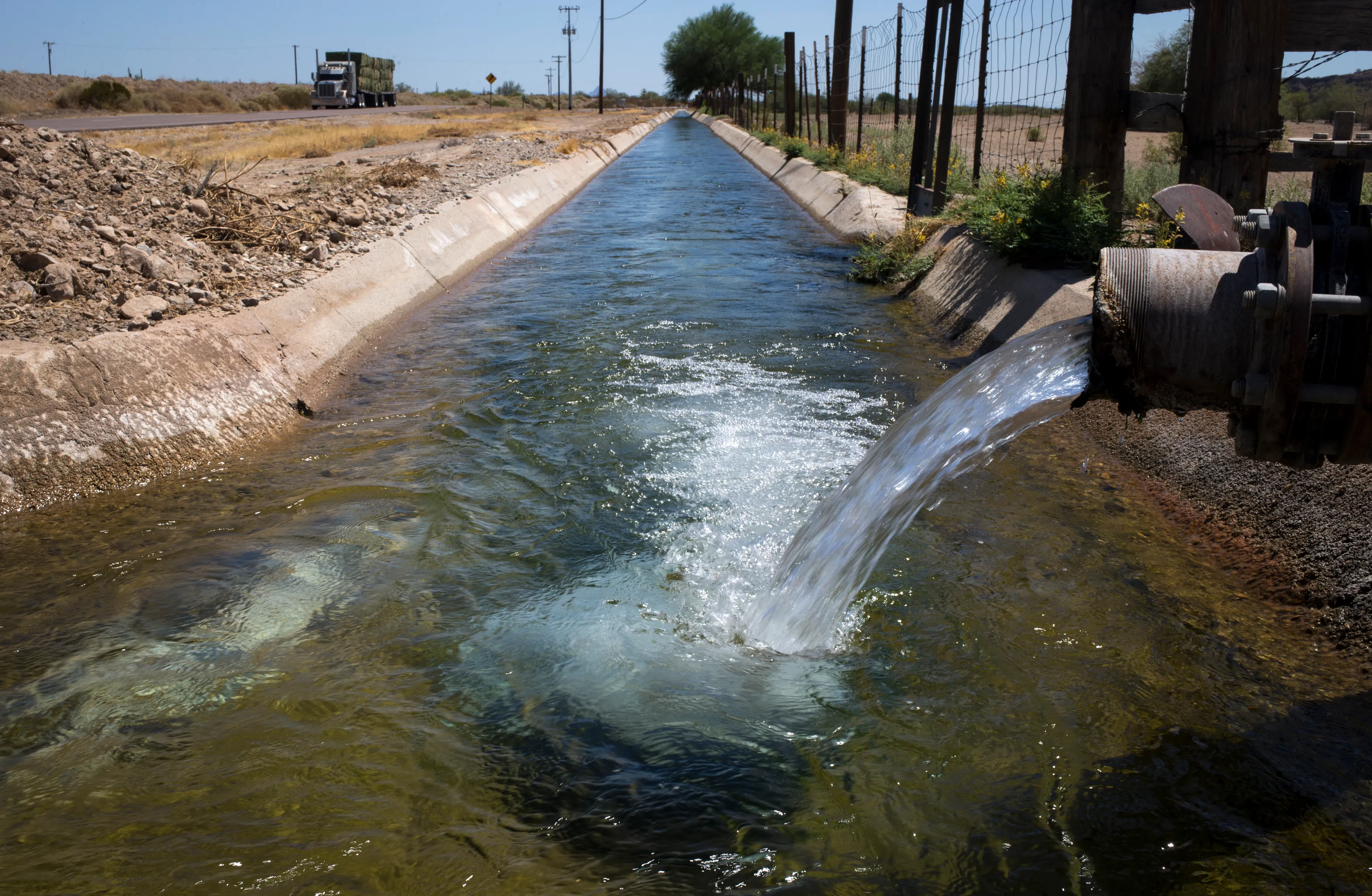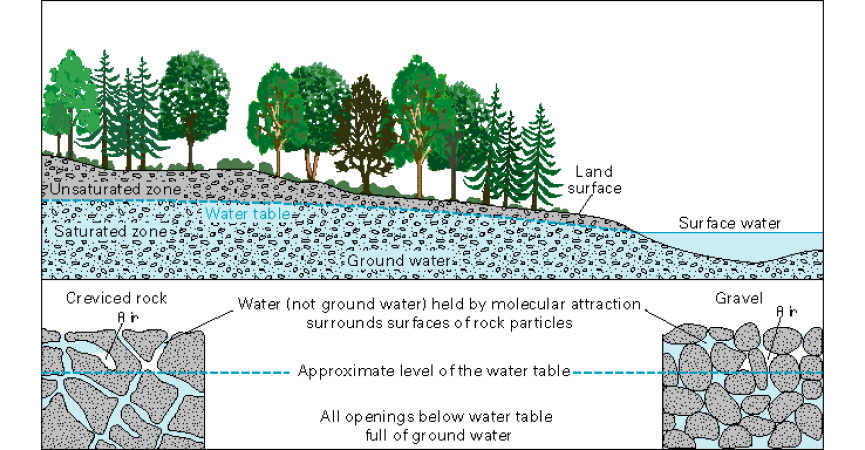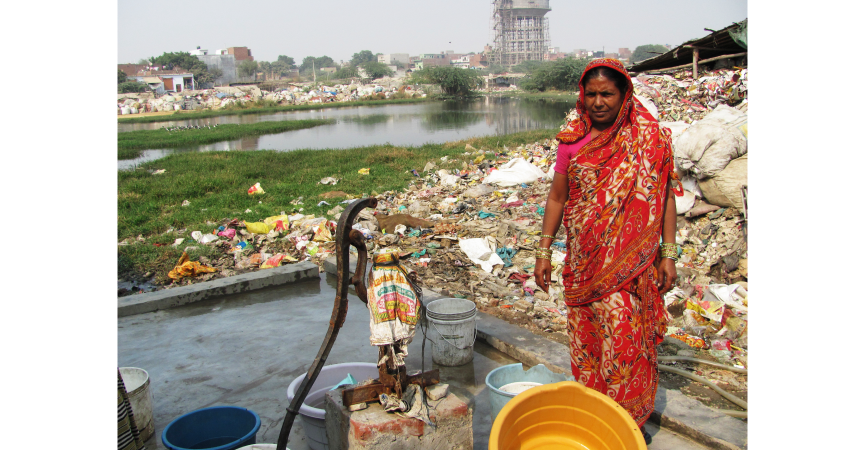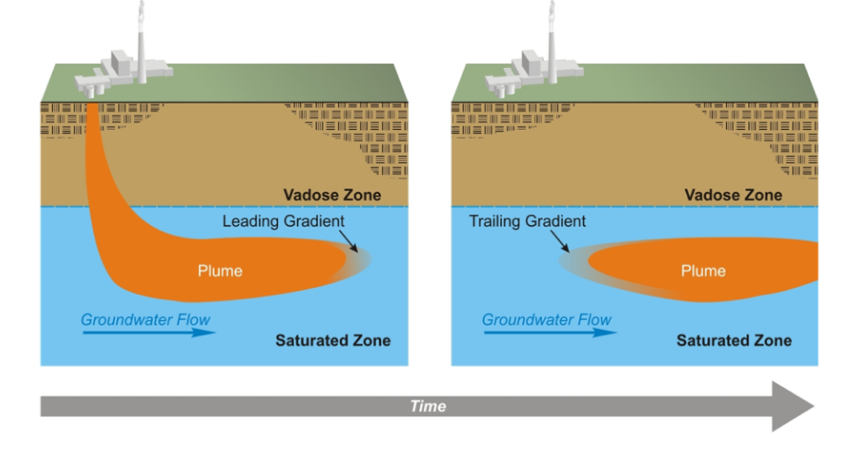

When we think of the source of water what comes to mind? Lakes, rivers, and streams; to put in simple terms, surface water. However, out of all the usable freshwater present in the world which is only 3%, approximately 97 percent of it is groundwater. With respect to the study carried out by the United Nations, 10 million cubic kilometers of water is stored underground. Whereas, Environment Canada states that all of the groundwater in the world could potentially cover the surface of the earth to a depth of 120 meters, while the total surface freshwater could only cover the earth to a depth of 0.25 meters.
So what is groundwater and where can we find it?
Groundwater is the water that accumulates underground. It can be anywhere, from spaces between loose particles of dirt to cracks and crevices in rocks. The amount of water stored depends on the types of rocks and dirt. The portion of the soil and rock that is saturated with water is called as saturation zone, while the portion of soil or rock which is not saturated is called the unsaturated zone. To better understand these terms, check the diagram below.

Source: U.S. Geological Survey/General Interest Publication "Ground Water"
When it starts raining, the water penetrates through the soil and percolates downward until it reaches the water table. Permeable surfaces, such as sand and gravel, allow up to 50% of precipitation to percolate into the soil. This rainwater can take several years or even decades to reach the water table. And because of the large volume of groundwater, once the rainwater reaches the water table, it is stored there for a long period. Interestingly, some of the rainwater that is stored in the ground could be a hundred or thousand years old.
Now that we have established what exactly groundwater is, let us understand if it is safe to drink.
Typically, both groundwater and surface water can be used for drinking. In fact, the former is preferable over the latter for several reasons. Firstly, groundwater is reliable during droughts as the surface water can be quickly depleted. Secondly, it is, in some cases, easier and cheaper to treat than surface water. With the help of wells, it can be tapped where it is needed, whereas surface waters are concentrated in lakes and streams.
Especially in India, the basic data points collected by the Indian government suggest that Indian’s consume more than 600 billion cubic meters (158 trillion gallons) of water annually. Out of which 245 billion cubic meters are drawn from aquifers (confined and unconfined). Aquifers are underground layers of permeable rocks, gravel, sand, or clay from which water can be extracted.
From this data, it can be said that India is more dependent on water pumped from aquifers than any other country. In fact, India accounts for about a quarter of the global demand for groundwater, according to the World Bank. Almost 90 percent of the groundwater in India is utilized for irrigation. The remaining 10 percent (24 billion cubic meters) supplies 85 percent of the country’s drinking water. So roughly, out of 1.35 billion residents of India, 80 percent depend on aquifers for both drinking and agriculture.

With this large population depending upon groundwater in India, it has to be made sure that it is not polluted and is safe to use. Which it must be, because how can it be contaminated? Well, that’s not the case. Depending upon the physical, chemical, and biological properties of a contaminant that has been released into the environment, it may move within an aquifer in the same way that groundwater moves. To put it simply, both water and certain contaminants flow in the direction of the topography from recharge areas to discharge areas. Permeable soils tend to disseminate water and certain types of contaminants easily to an aquifer below.
As the water moves slowly, so do the contaminants in it. And due to this slow movement, contaminants tend to remain concentrated in the form of a plume. This plume follows the path of the water. The contaminants can move rapidly through fractures in rocks. They can also move into the water through root systems, abandoned wells, animal burrows, and other systems of holes that provide a pathway for contaminants.

Source: Interstate Technology and Regulatory Council, 2010.
Typically, the greater the distance between a source of contamination and an aquifer, the more likely it is that the natural processes will abate the impacts of contamination. The natural processes such as oxidation, biological degradation, adsorption, and absorption which take place in the soil layers of the unsaturated zone, reduce the concentration of a contaminant before it reaches the aquifer. Even the contaminants which reach the aquifers directly, without passing through the unsaturated zone, could become less toxic due to the dilution process with the groundwater. However, because this water moves slowly, contaminants undergo less dilution than when in surface water.
Groundwater contamination is nearly always because of human activities. Groundwater is extremely vulnerable in areas where population density is high and human usage of the land is extensive. Almost every operation that involves the discharge of chemicals or wastes into the environment, whether intentionally or unintentionally, has resulted in groundwater contamination in India.
Smarter Use of WaterSolid waste is disposed of in thousands of municipal as well as industrial landfills. Chemicals that should be disposed of in hazardous waste landfills often end up being in municipal landfills. The disposal of household waste is not regulated as well. Once the waste is disposed of in a landfill, the chemicals can leach into the aquifers through precipitation and surface runoff. To avoid this, new landfills with clay or synthetic liners and leachate collection systems are required to avoid groundwater pollution. Most of the landfills, however, do not possess these systems. They are often sited over aquifers in permeable soils with shallow water tables, increasing the potential for leachate to contaminate it.
Sewers and PipelinesSewer pipelines carrying wastewater could sometimes leak fluids into the surrounding soil and leading to groundwater pollution. This sewage may consist of organic matter, heavy metals, inorganic salts, bacteria, nitrogen, and viruses. Other pipelines carrying industrial chemicals and oil brine also possess a threat of leakage, especially when the materials transported through the pipes are highly corrosive. because this water moves slowly, contaminants undergo less dilution than when in surface water.
Use of Pesticide and FertilizerMillions of tons of pesticides and fertilizers such as insecticides, herbicides, rodenticides, fungicides, avicides, and many more are used for the production of crops. Not only farmers, but also homeowners, utilities, and municipalities use these chemicals. A good number of these toxic pesticides have entered and contaminated the water in the aquifer. Some of them could last months or even years in the soil and water. Animal feces that percolate into the ground from farm feedlots are another major source of groundwater pollution.
These are some of the many factors that contribute to groundwater contamination. The same source of water through which almost 245 billion cubic meters of water is extracted in India. How would this affect the population of 1.38 billion? This contamination could result in poor drinking water quality, degraded surface water systems, loss of water supply, and eventually potential health problems. In some cases, the groundwater contamination is so severe that the entire water supply system must be abandoned as a source of drinking water.
So the question is simple, the water that is so contaminated, has hazardous toxins which could deteriorate the environment as well as human health, how is it just groundwater and not wastewater?